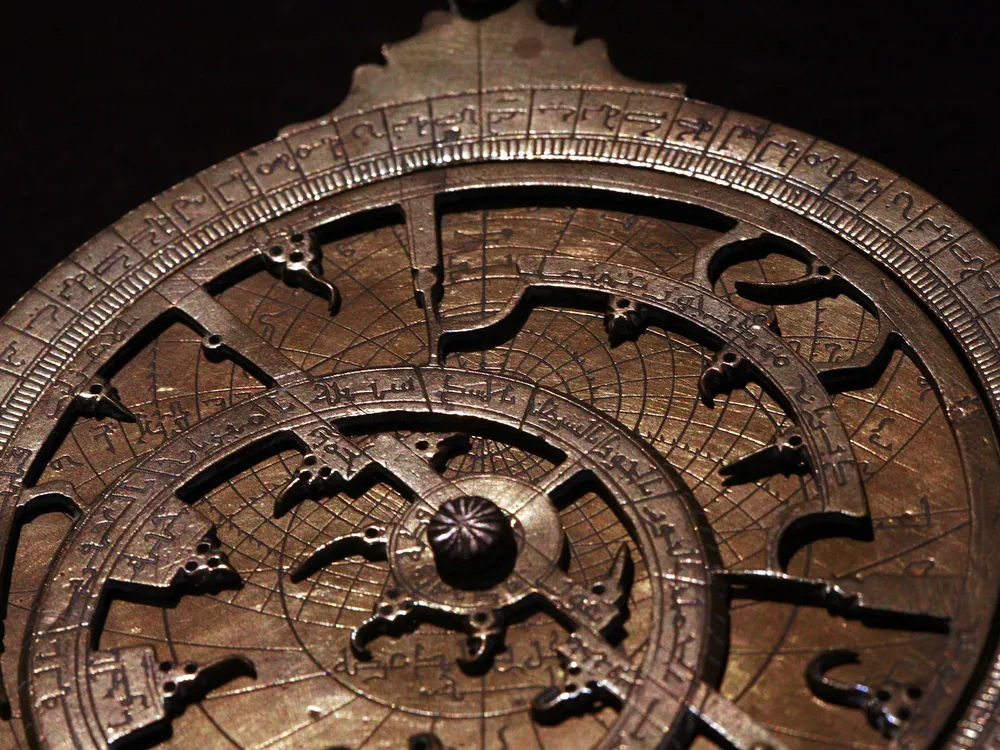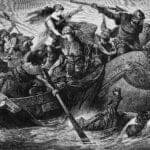Embark on a captivating journey through the annals of astronomy and history as we delve into the astrolabe, an extraordinary instrument employed for centuries to navigate the boundless oceans, chart the celestial tapestry, and illuminate groundbreaking scientific discoveries. Join us as we unravel the secrets of this ancient marvel, tracing its evolution from humble beginnings to its enduring legacy, and discover how the astrolabe reshaped our understanding of the universe.
Astrolabe Definition: World History
Imagine holding a portable model of the universe itself, a device that could decipher the stars’ cryptic messages and reveal the time with a mere glance at the sun’s position. This was the reality for people centuries ago thanks to the astrolabe. Invented as early as the 6th century, this ingenious instrument, while seemingly simple at first glance, revolutionized navigation, astronomy, and even astrology.
The astrolabe can be compared to an ancient analog computer, but instead of relying on circuits and chips, it employed meticulously crafted plates and dials. At its core resided the ‘planisphere,’ a flat, two-dimensional representation of the celestial sphere, mimicking the sky as seen from Earth. This ingenious design allowed people to map the positions of stars and planets. A rotating disc called the ‘rete’ depicted the ecliptic, the sun’s apparent path across the sky. Finally, the ‘alidade,’ a sighting device, measured the angles between celestial objects and the horizon.
More than just a fascinating gadget, the astrolabe was a powerful tool with an extensive reach, profoundly impacting world history. Sailors, particularly during the astronomy in the middle ages, relied on it to traverse vast oceans, determining their latitude and plotting courses across uncharted waters. This facilitated global exploration and trade, bridging distant cultures and disseminating knowledge.
On land, astronomers harnessed the astrolabe’s power to unravel the cosmos’ mysteries, tracking the movements of celestial bodies, predicting eclipses with remarkable accuracy, and creating comprehensive star charts. It provided them with the means to study and understand the universe in ways never before imagined.
Even astrologers, who believed that the celestial bodies’ positions influenced human affairs, found the astrolabe invaluable for generating horoscopes and making predictions.
While the astrolabe’s prominence eventually waned with the advent of more specialized instruments like the sextant and telescope in the 17th century, its contribution to our understanding of the universe remains immeasurable. This intricate device, characterized by its elegant design and extraordinary capabilities, stands as a testament to human ingenuity and our enduring fascination with the cosmos. Today, astrolabes are treasured artifacts, reminding us of a time when humanity looked to the stars for guidance, seeking to unlock the universe’s secrets.
What is the best definition of astrolabe?
Having explored its impact on history, let’s define the astrolabe. This ingenious device, dating back to the 6th century, served as a precursor to modern astronomical computers, using the movements of stars and planets to unlock secrets of time and navigation.
Essentially, the astrolabe was a handheld model of the sky, enabling people to determine their location on Earth by measuring the positions of the Sun, Moon, and stars. This was groundbreaking for explorers navigating vast oceans and for anyone trying to keep time before the advent of modern clocks.
The astrolabe was a versatile tool, capable of determining the time, day or night, finding direction (like an early compass), and calculating latitude. It was a cornerstone of science and exploration, particularly in Europe and the Islamic world.
The astrolabe’s decline in use coincides with the emergence of newer technologies, such as telescopes and increasingly accurate clocks, which overshadowed its capabilities by the 17th century.
Despite its diminished role in modern times, the astrolabe is far from forgotten. Today, it is celebrated for its historical significance and the incredible ingenuity it represents, found in museums, classrooms, and the hands of hobbyists fascinated by the history of astronomy and navigation.
What is the Definition of Astrolabe in the Age of Exploration?
During the Age of Exploration, long before GPS or even reliable maps, intrepid sailors faced the daunting task of navigating vast oceans. Their primary tool? The astrolabe, a pocket-sized astronomical instrument with roots in ancient astronomy, but perfected by medieval artisans. This intricate device, composed of meticulously crafted brass rings and scales, unlocked the secrets of the stars.
Imagine the astrolabe as a celestial protractor. Sailors would hold it up, align it with the horizon, and sight the sun or a star. This provided them with an angle. By comparing this measurement with astronomical charts detailing where celestial objects should be in the sky, they could determine their latitude—their position north or south of the equator.
Explorers like Vasco da Gama and Christopher Columbus, who forever changed the map of the world, relied heavily on the astrolabe. This trusty companion guided them across uncharted waters, enabling them to make groundbreaking voyages of discovery. The astrolabe’s complexity belied its inherent simplicity: by understanding the position of the stars, explorers could literally find their place in the world. This is why the astrolabe holds a revered place as one of the most important tools of the Age of Exploration.
Key Takeaways:
- The astrolabe was instrumental in determining latitude during the Age of Exploration.
- It represented a fusion of ancient astronomy and expert craftsmanship, showcasing human ingenuity.
- Without the astrolabe, many famous voyages and discoveries might not have been possible.
- Despite its seemingly complex design, the astrolabe was surprisingly user-friendly for its time, contributing to its widespread use among explorers.
Is the astrolabe still used today?
While the astrolabe’s reign as a primary navigational tool has ended, it’s not relegated to museum displays. Like a vintage typewriter, its function has evolved. Although you wouldn’t use a typewriter as your primary computer today, it holds a certain charm for specific tasks or as a decorative piece.
Similarly, the astrolabe has found a new purpose in education. Imagine students learning about ancient astronomy, not just through textbooks, but by holding a real astrolabe, feeling its weight, and understanding how its intricate dials and markings unlocked the universe’s secrets. This tangible connection to history brings learning to life.
Surprisingly, astrolabes still have practical applications in surveying. Their ability to measure angles and distances remains valuable when defining property lines, determining a building’s height, or tackling other land-related projects. This ancient tool proves surprisingly relevant even in our modern world.
With advanced technology at our fingertips, the use of an astrolabe might seem archaic. However, their simplicity and elegance hold a certain appeal. They remind us that traditional methods can still hold value in our technologically advanced world. Moreover, there’s an undeniable allure in holding a piece of history, recognizing that centuries ago, this same tool helped people navigate by the stars and comprehend the cosmos.
Why was the astrolabe important during the Renaissance?
The Renaissance, an era defined by remarkable transformation and discovery, saw the astrolabe playing a pivotal role. More than just a beautiful object, this intricate device was like a miniature computer for the stars, and its impact was profound.
A Navigator’s Best Friend
Before the astrolabe, seafaring was a perilous endeavor. Determining one’s location at sea was unreliable, relying on rudimentary methods based on the sun and stars. Voyages were fraught with danger and uncertainty.
The astrolabe transformed navigation. By using the position of the sun or stars, navigators could determine their latitude—their position north or south of the equator. This newfound accuracy made voyages more predictable, allowing explorers to venture farther with greater confidence. The astrolabe played a crucial role in some of history’s most daring expeditions, including those of Christopher Columbus and Vasco da Gama.
More Than Just Finding Your Way
The astrolabe’s influence transcended navigation:
- Global Trade Gets a Boost: Accurate navigation led to the establishment of new trade routes, connecting different parts of the world. This facilitated increased trade, fostering the exchange of goods, ideas, and cultures.
- Astronomy Takes a Leap Forward: Astronomers embraced the astrolabe, using it to chart the positions of stars and planets, significantly advancing our understanding of the universe.
- Art and Culture Feel the Impact: The astrolabe’s intricate design and scientific significance captured the imagination of the Renaissance. It became a symbol of progress and knowledge, appearing in art, literature, and even poetry.
A Legacy of Discovery
While considered a relic today, the astrolabe’s impact on the Renaissance is undeniable. It symbolized a world on the cusp of change—a world hungry for knowledge and eager to explore. The astrolabe embodies how curiosity and ingenuity, working in tandem, can push the boundaries of human understanding.
Want to learn more? This is just a glimpse into the fascinating history of the astrolabe. Ongoing research continues to reveal more about this incredible invention, and there is still much to discover.
What is astrolabe in world history?
Centuries ago, long before stargazing apps and powerful telescopes, people looked up at the night sky with a sense of wonder. They were captivated by the stars, curious about their movements and significance. Among the tools used to unlock the sky’s mysteries was the astrolabe.
Envision the astrolabe as an ancient astronomical gadget, a harmonious blend of art, mathematics, and ingenious craftsmanship. Unlike a telescope, it functioned as a sophisticated, portable model of the heavens.
The invention of the astrolabe is attributed to the ancient Greeks, likely sometime in the 6th century. This device became highly sought after by scholars and explorers, particularly during the medieval period in Europe and the Islamic world. Its popularity stemmed from its ability to determine the position of stars and planets, tell time accurately regardless of location, and navigate across vast distances. Long before GPS and sophisticated maps, sailors relied on the stars, and the astrolabe simplified the reading of these celestial maps.
Beyond its practical applications, astronomers found the astrolabe invaluable. They used it to trace the movements of celestial objects, chart constellations, and deepen their understanding of the universe.
As with many groundbreaking inventions, the astrolabe’s prominence eventually waned with the emergence of newer, more powerful instruments, like the telescope, in the 17th century.
Despite its diminished use, the astrolabe’s impact should not be underestimated. It laid the groundwork for many of the astronomical tools we rely on today, serving as a reminder of humanity’s enduring fascination with the sky and our relentless pursuit to unravel its mysteries.
Even today, astrolabes can be found in museums, serving as a testament to the ingenuity of our ancestors and their profound connection to the cosmos.
While the future of astronomy remains unwritten, the astrolabe’s role in shaping our understanding of the universe is undeniable. Perhaps, somewhere in the world today, an instrument inspired by this ancient tool is being used to make groundbreaking discoveries, continuing the astrolabe’s legacy of unlocking the cosmos’ secrets.
What is an Astrolabe Explained for Kids?
Imagine a super cool gadget from a time long ago, a clever combination of astronomy (the study of stars and planets) and math. This gadget, called an astrolabe, helped sailors navigate the vast oceans, explore new lands, and learn about the stars. It was like having a smartphone for the sky, but instead of apps, it used rotating disks and special markings!
Picture a big, flat metal disk, kind of like a pizza pan. But instead of pepperoni, it has lines and circles etched onto it, resembling a maze with a purpose. These lines and circles are like secret codes that reveal the location of stars at different times. People observed that stars appear to move across the sky in predictable patterns, and the astrolabe helps us decipher those patterns. By aligning the markings with the visible stars, we can tell time and even determine which direction is north.
One of the coolest things about an astrolabe is its ability to tell you your latitude. Latitude is like an address on Earth, revealing how far north or south you are from the equator, the imaginary line circling the middle of our planet. Imagine cutting the Earth in half like an orange, and then slicing it again into thinner and thinner circles – those are like lines of latitude. The astrolabe helps you figure out which “slice” you’re on by measuring the Sun’s height in the sky or even the angle of a bright star.
Here’s a simplified explanation of how it works:
- Locate the Sun (or a bright star) in the sky.
- Hold up your astrolabe and align a special pointer with the Sun.
- Read the numbers on the astrolabe where the pointer lines up. These numbers tell you the angle of the Sun.
- Use a special chart or some math to figure out your latitude based on the angle of the Sun.
You might wonder why a compass wasn’t used instead. While a compass is excellent for determining direction, it can’t tell you your latitude. The astrolabe provided explorers with crucial information about their location, revolutionizing seafaring.
It’s important to remember that while astrolabes were incredibly useful tools for their time, they weren’t perfect. Their measurements weren’t always extremely precise, and using one effectively required some skill and practice. Understanding a bit about astronomy and math was also necessary to make sense of all those lines and numbers. However, these limitations are part of what makes astrolabes so fascinating. They are a testament to the ingenuity of our ancestors and their ability to use their knowledge of the stars to navigate the world.
What is an astrolabe answer?
In essence, an astrolabe is a super-smart protractor from ancient times, a handheld model of the sky, and an essential tool for astronomers and navigators for centuries.
Before GPS, smartphones, or accurate clocks, people relied on the stars for navigation and timekeeping, especially at sea. The astrolabe made this possible. By carefully positioning the astrolabe and sighting stars, one could determine their latitude, the time, and even predict the positions of celestial bodies.
While using an astrolabe may seem complicated today, it was a testament to the deep understanding of math, astronomy, and craftsmanship of those who used it.
Here are some intriguing facts about astrolabes:
- They were both practical and beautiful. Many astrolabes were intricately decorated, elevating them to objects of art as well as science.
- Their exact origin remains a subject of debate. Some historians credit the ancient Greeks with their invention, while others point to earlier versions in the Middle East.
- While no longer used for navigation, astrolabes are still studied and appreciated. They remind us of our ancestors’ ingenuity and the power of human observation.
The next time you gaze at the night sky, remember the astrolabe—a tool that connected humans to the cosmos for over a thousand years.
What is the meaning of astrolube?
It seems there might be a slight misspelling. You’re likely looking for information on the astrolabe, not “astrolube.” Astrolabes are fascinating instruments from history! Imagine a time long before smartphones, GPS, and even reliable clocks. Back then, people still needed to find their way, especially sailors crossing vast oceans. That’s where the astrolabe comes in.
Think of an astrolabe as an ancient astronomical computer, a handheld model of the sky. It’s made up of intricately designed metal disks that rotate, allowing the user to calculate the positions of the sun, moon, and stars. By aligning the astrolabe with the horizon and observing celestial bodies, sailors could determine their latitude, the time, and even predict the positions of stars for navigation.
The invention of the astrolabe is credited to the ancient Greeks, probably around the 6th century. Its use flourished during the Islamic Golden Age, a period when scholars refined its design and expanded its applications. Astrolabes were not just for adventurous seafarers; astronomers used them for making precise celestial observations, astrologers used them for casting horoscopes, and timekeepers used them to regulate clocks and determine prayer times.
While the astrolabe may seem like a relic of the past, its role in advancing our understanding of the universe was crucial. Even today, these intricate instruments serve as beautiful reminders of humanity’s enduring fascination with the cosmos.
What is a short sentence for astrolabe?
An astrolabe is an ancient instrument used to calculate the positions of stars and tell time.
What is the definition of Mariner’s astrolabe?
During the Age of Exploration, navigation was paramount. Imagine setting sail across a vast ocean with no modern navigational tools. This is where the mariner’s astrolabe, a simplified and more durable version of the astrolabe, became essential.
This specialized instrument allowed sailors to measure the angle of the sun or stars above the horizon. This angle was crucial because it helped determine their latitude—how far north or south they were.
While the mariner’s astrolabe excelled at determining latitude, determining longitude—how far east or west they were—remained a significant challenge that puzzled scientists and inventors for centuries!
Despite its limitations, the mariner’s astrolabe was revolutionary. It opened up the world for exploration, enabling sailors to venture farther and make groundbreaking discoveries.
As technology advanced, more precise instruments like the sextant eventually replaced the mariner’s astrolabe, relegating it to a relic of a bygone era. However, its importance in shaping history and expanding the boundaries of human exploration cannot be overstated.
- China II Review: Delicious Food & Speedy Service - April 17, 2025
- Understand Virginia’s Flag: History & Debate - April 17, 2025
- Explore Long Island’s Map: Unique Regions & Insights - April 17, 2025

















1 thought on “Unlocking the Universe: A Historical Definition of the Astrolabe and its Global Impact”
Comments are closed.